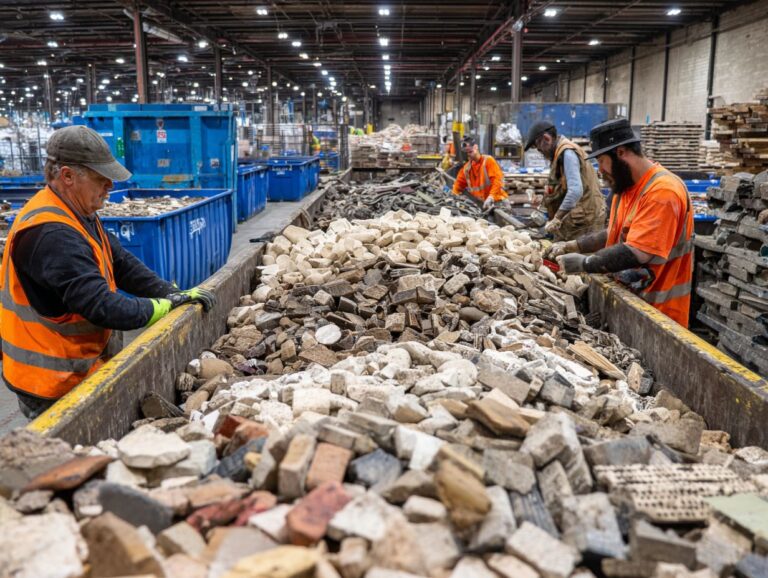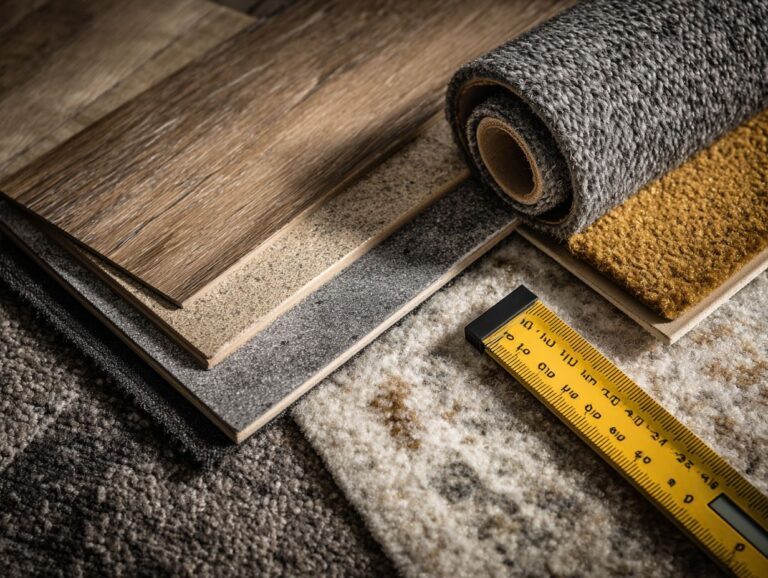Water-Based vs Oil-Based Polyurethane Finishes
Choosing between water-based and oil-based polyurethane finishes can dramatically affect the look and durability of your hardwood floor. Water-based polyurethane, like Bona Mega One, offers quick drying times and low VOCs, while oil-based polyurethane delivers rich color and a classic, enduring finish quality. In this article, we’ll look at the main differences between these two finishes to help you choose the right one for your flooring project. Prepare to change your space with the right decision!
Key Takeaways:
Contents
- Overview of Water-Based Polyurethane
- Overview of Oil-Based Polyurethane
- Comparison of Water-Based and Oil-Based Polyurethane
- Polyurethane Finish Comparison Statistics
- Choosing the Right Polyurethane for Your Project
- Frequently Asked Questions
- What is the difference between water-based and oil-based polyurethane finishes?
- Which type of polyurethane finish is more environmentally friendly?
- Do water-based and oil-based polyurethane finishes have different levels of durability?
- Can I use water-based and oil-based polyurethane finishes interchangeably?
- Which type of polyurethane finish is easier to clean up?
- Are there any special considerations when using water-based or oil-based polyurethane finishes on specific types of wood?
Definition of Polyurethane
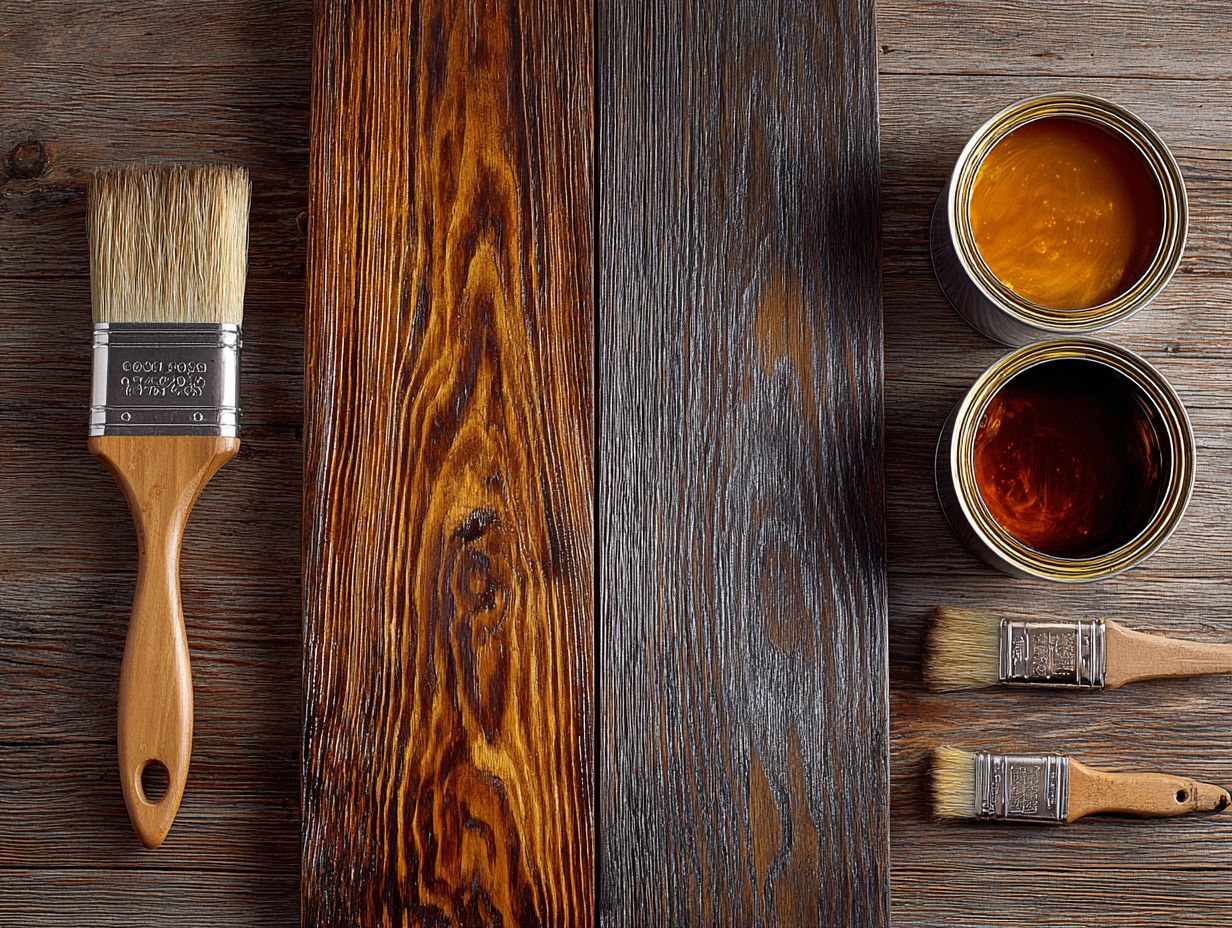
Polyurethane is a synthetic resin made from polymers that provides a durable protective finish for wood surfaces.
This finish is commonly used for furniture, cabinets, and flooring because it resists scratches and moisture very well. Unlike oil-based finishes that can yellow over time, water-based polyurethane dries clear and retains the natural color of wood.
To apply, sand the wood surface for smoothness, clean it thoroughly, and use a brush or roller for even distribution. For the best results, apply multiple thin coats, allowing adequate drying time in between. This method offers excellent protection, enhances the wood’s look, and extends its lifespan. For those interested in how this relates to broader flooring projects, you might find our detailed guide on the Hardwood Floor Refinishing Process insightful.
Importance of Finishing
Finishing hardwood floors is essential, as it safeguards wood from wear and tear while enhancing its natural beauty.
A quality finish protects against moisture, scratches, and dirt, prolonging the life of your flooring. Oil-based polyurethane is long-lasting and gives oak a deep amber color. Water-based finishes dry fast and keep a lighter color, which works well with woods like maple.
Penetrating oils such as tung or linseed oil provide a more natural look, accentuating the grain. Choosing the right finish can be complex, so it’s helpful to understand the differences between these options. Related insight: Hardwood Flooring Finishes – Polyurethane vs Oil vs Wax
Overview of Water-Based Polyurethane
Water-based polyurethane is now more commonly used because it dries faster and is less harmful to the environment than oil-based versions. If interested, you can explore the differences and benefits of various finishes in our detailed guide on Hardwood Flooring Finishes – Polyurethane vs Oil vs Wax.
Composition and Ingredients
Water-based polyurethane comprises acrylic and urethane resins, offering a strong protective layer while minimizing harmful chemicals.
The primary component, acrylic resin, provides flexibility and resistance to UV light, preventing yellowing over time. Urethane resin increases strength, so the surface does not easily get scratched or stained.
To achieve the best results, choose a product with a higher solids content for increased thickness and durability. Make sure to get the surface ready by sanding and cleaning it before you start.
Putting on multiple thin layers, rather than a single thick one, makes the finish stronger and more appealing. Usually, 2-3 coats are needed for the best protection.
Application Process
Applying water-based polyurethane typically involves sanding, cleaning the surface, and using a roller or brush for even application, with Bona Mega One recommended for optimal results.
For a perfect finish, begin by sanding the surface with 220-grit sandpaper to make it smooth.
After cleaning, consider using a high-quality microfiber roller for a lint-free finish, which prevents debris from marring the final look.
Apply polyurethane in thin, even coats, allowing at least two hours of drying time between applications. If possible, ventilate the area well to promote drying and minimize odors.
Sanding lightly between coats helps paint stick better and results in a glossy finish.
Drying Time and Curing
Water-based polyurethane typically dries to the touch within 1-2 hours, but full curing can take up to 30 days, requiring careful monitoring.
For optimal results, keep indoor humidity at 40-60% and the temperature near 70 degreesF. In high humidity, drying may take longer, while low humidity can lead to rapid evaporation, risking uneven finishes.
For example, use a dehumidifier in damp conditions or a humidifier in dry periods. When applying, aim for thin coats and allow each layer to dry completely before adding another.
Use a moisture meter to make sure that floors feel dry when you press lightly with your foot and the finish doesn’t stick.
Advantages of Water-Based Polyurethane
Water-based polyurethane has many benefits. It gives a clear finish that keeps the wood looking natural and dries quickly, which saves time.
It releases much less harmful chemicals than oil-based options, which makes it a safer option for indoor use. This finish is also easy to clean with soap and water, reducing the cleanup time after application.
To get the best outcome, apply at least three thin layers. Use a good brush or foam tool for an even application, which helps prevent bubbles or streaks. Brands like Minwax or Varathane are renowned for their reliable formulations and user-friendly application. For a deeper understanding of how water-based polyurethane compares to other finishes, such as oil and wax, consider reading our detailed comparison on hardwood flooring finishes.
Disadvantages of Water-Based Polyurethane
Despite its advantages, water-based polyurethane may have drawbacks such as lower durability in high foot traffic areas compared to oil-based alternatives.
Besides not lasting as long, water-based formulas can also scratch more easily, which might not be the best choice for homes with pets or children.
For example, if you’re finishing a hardwood floor in a busy hallway, you might consider using oil-based polyurethane for better resistance.
Color choices can vary; water-based products usually dry clear, but they might not highlight wood tones as effectively as oil-based products.
If looks are important, test examples before starting the entire project.
Overview of Oil-Based Polyurethane
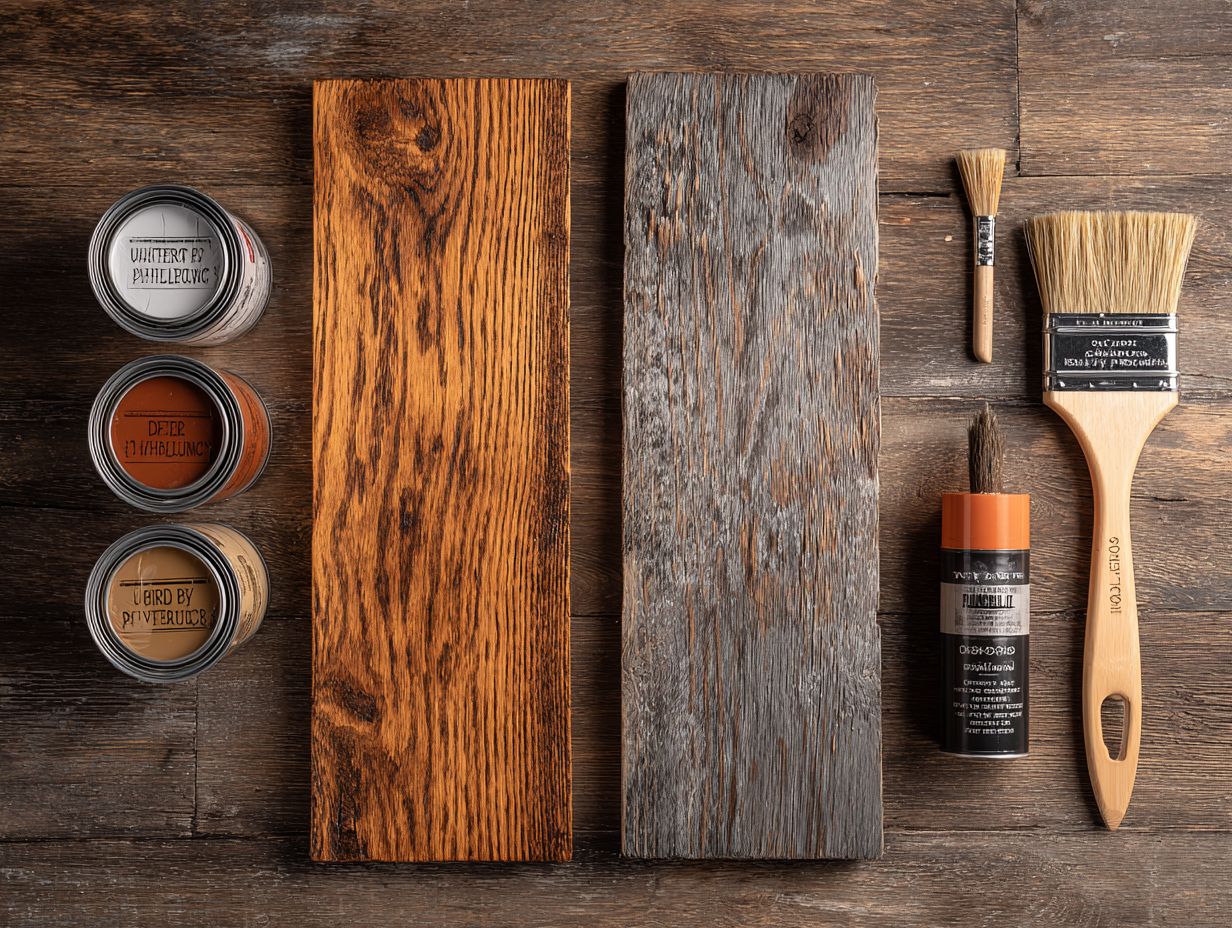
Oil-based polyurethane is known for its warm amber color and lasting strength, making it popular for achieving a rich finish on hardwood floors. As mentioned in our detailed comparison of hardwood flooring finishes, understanding the differences between polyurethane, oil, and wax finishes can help you choose the best option for your needs.
Composition and Ingredients
Oil-based polyurethane consists of alkyd resins and solvents, contributing to its durability and longer drying times compared to water-based options.
Oil-based polyurethane is resistant to wear and moisture, which makes it suitable for floors and furniture that get a lot of use.
Users should be mindful of its longer drying times, which can extend from 8 to 24 hours, impacting project timelines. The increased levels of volatile organic compounds (VOCs) in these products can be harmful to health, so it’s important to have good airflow when using them.
Choosing low-VOC formulations can mitigate some of these concerns without compromising the rich, amber finish that oil-based options provide.
Application Process
The application of oil-based polyurethane requires proper surface preparation, typically involving sanding and additional coats for optimal finish quality.
- Start by sanding the wood surface with 120-grit sandpaper, moving to 220-grit for a smooth finish.
- Make sure the surface is clean and without dust before you apply the polyurethane.
- Choose a good natural bristle brush. It prevents bubbles and gives smooth coverage.
- Apply a thin coat, working in the direction of the wood grain, and avoid over-brushing.
- Allow the first coat to dry for 12-24 hours before lightly sanding with 220-grit sandpaper and applying a second coat.
- Repeat this process until you achieve your desired finish.
Drying Time and Curing
Oil-based polyurethane generally feels dry after 6-8 hours, but it can take up to 30 days to completely harden, affecting how long projects take.
This extended drying time means you’ll need to plan your workflow around the curing process. To effectively manage timelines, consider scheduling complementary tasks during this period.
For instance, while the polyurethane is curing, you could prepare other surfaces or tackle different projects. Make sure there is good airflow to speed up drying; fans can help move air around. Be mindful of dust and debris, as these can settle on wet surfaces.
Implementing these strategies can help maintain productivity while you wait for the finish to fully cure.
Advantages of Oil-Based Polyurethane
Oil-based polyurethane is popular because it lasts a long time and has a deep finish. This makes it a good choice for places with a lot of foot traffic and for use in businesses.
Besides being long-lasting, oil-based polyurethane adds a warm amber color that highlights wood grain. This finish is tough and waterproof, making it ideal for busy areas like restaurants and stores.
To maintain its appearance, regular cleaning with a mild soap solution is recommended. To keep the color the same, use the same product for touch-ups.
This finish improves the look and cuts down on how often it needs to be redone, saving time and effort in active environments.
Disadvantages of Oil-Based Polyurethane
Despite its many strengths, oil-based polyurethane poses challenges like strong odors during application and longer drying times, which can deter some users.
Along with these issues, oil-based polyurethane contains high levels of volatile organic compounds (VOCs), which contribute to smog and can impact indoor air quality. When applying, users should open windows and use fans to reduce the chance of breathing in harmful substances.
The cleanup process requires solvents such as mineral spirits, which can also be harmful to the environment. For those concerned about these factors, water-based alternatives may offer a less odorous, quicker-drying solution while reducing VOC emissions significantly.
Comparison of Water-Based and Oil-Based Polyurethane
Examining water-based and oil-based polyurethane shows important contrasts in toughness, look, and ecological effects, which can affect buyer decisions.
Polyurethane Finish Comparison Statistics
Polyurethane Finish Comparison Statistics
Finish Durability and Quality: Durability Ratings
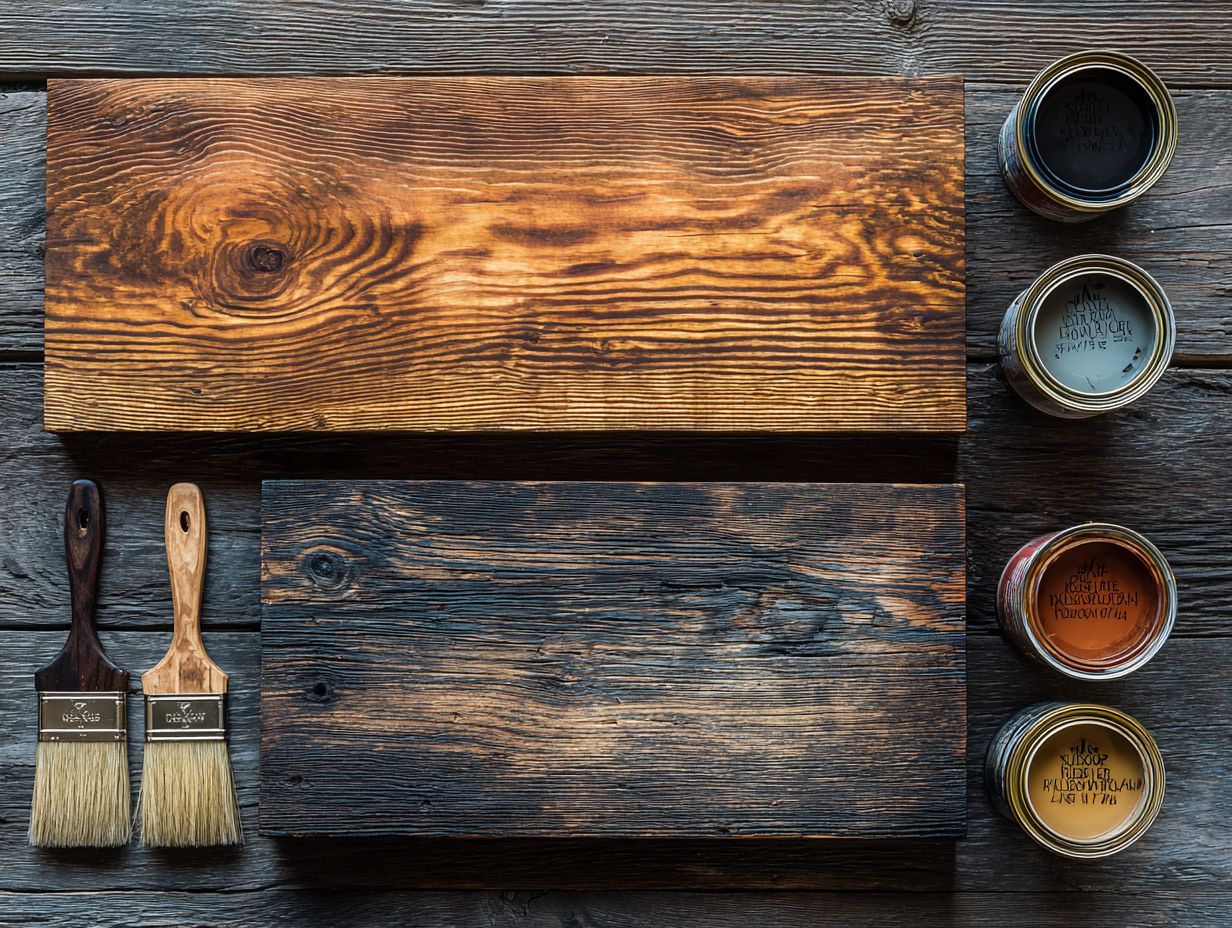
Finish Durability and Quality: Finish Application and Repairability
Finish Durability and Quality: Chemical Resistance
The Polyurethane Finish Comparison Statistics give a detailed review of various finishes based on important measures like how long they last, their quality, how easy they are to apply, fix, and how they resist chemicals. Knowing these features is important for choosing the right finish for different uses, especially in places that need durability and long-lasting results.
Finish Durability and Quality metrics highlight the exceptional performance of oil-based polyurethane. It achieves a perfect 100% rating in water resistance and scratch resistance This makes it a perfect option for surfaces that deal with water and frequent use. The durability of Tier 1 finishes, rated at $100.00, denotes their high quality and long-lasting nature, providing excellent protection and aesthetic appeal.
- Finish Application and Repairability: Wax scores a perfect 100% in ease of application, indicating its user-friendly nature, especially for DIY enthusiasts. Likewise, Shellac achieves a 100% rating in repairability This is an excellent choice for tasks that need regular updates or repairs because it mixes easily.
Chemical Resistance is a critical factor for maintaining finish integrity in challenging environments. Both catalyzed lacquer and oil-based polyurethane attain a 100% rating, demonstrating their strength in resisting chemicals. Similarly, water-based finishes also score 100%, offering a viable alternative with fewer environmental impacts and quicker drying times.
This dataset highlights the advantages of different finishes. Although oil-based polyurethane is very durable and tough, catalyzed lacquer and water-based finishes offer good protection against chemicals. Wax and shellac offer ease of application and repair, catering to both professionals and hobbyists. Selecting the right finish depends on specific needs, balancing factors like environmental exposure, ease of use, and maintenance requirements.
Durability and Longevity
Oil-based polyurethane generally offers superior durability, often lasting over 10 years, while water-based alternatives typically last 3-5 years in similar conditions.
The choice between these finishes also affects application and maintenance. For high-traffic areas like hallways or kitchens, oil-based variants might be ideal due to their scratch resistance, while water-based options work well in spaces with low odor requirements.
When applying, use a good brush for oil-based paints to get an even coat, while a synthetic or foam applicator works best for water-based products.
Consider using a protective sealer on top of the finish for extra longevity, especially in moisture-prone areas.
Appearance and Finish
In terms of appearance, oil-based polyurethane imparts a warmer amber tone, while water-based options maintain a clearer finish that highlights the wood’s natural color.
Oil-based polyurethane makes the wood grain stand out and gives a warm look, which works well for darker woods like walnut or mahogany.
Conversely, water-based finishes are excellent for lighter species such as maple or ash, as they preserve the wood’s natural shades without yellowing over time.
Oil-based finishes typically have a higher sheen level, often resulting in a glossy surface that reflects light beautifully.
It’s important to consider the desired aesthetic and long-term maintenance; for instance, oil-based finishes require mineral spirits for cleanup, while water-based alternatives clean up with soap and water.
Environmental and Health Considerations
Water-based polyurethane is significantly more environmentally friendly, with lower VOC content that reduces health risks during application compared to oil-based finishes.
Water-based polyurethanes typically have VOC levels around 50 grams per liter, while oil-based versions can exceed 400 grams per liter. This significant change results in improved indoor air quality and matches what consumers want in safer, environmentally friendly products.
Water-based finishes dry faster, allowing for quicker project turnaround-often within hours instead of days. Tools like the Kobalt 2-Gal. Air Compressor can further expedite the spray application, ensuring a smooth, efficient finishing process without the toxic fumes often associated with oil-based alternatives.
Cost Analysis
The cost of polyurethane finishes varies, with water-based options typically priced between $30-$60 per gallon, while oil-based products range from $40-$80.
When choosing between water-based and oil-based polyurethane, consider the drying time and application method. Water-based finishes dry quickly, usually in about 2 hours, making them good for fast projects.
Conversely, oil-based finishes take 6-8 hours to dry, but they offer a richer finish and greater durability.
For optimal results, invest in a quality brush like a Wooster for even application. Think about the cost over time: a water-based finish might need redoing every 2-3 years, while oil-based options can last 5-7 years, potentially giving more for your money.
Choosing the Right Polyurethane for Your Project
Choosing the right polyurethane finish means thinking about how much foot traffic the area will get, what look you want, and any environmental factors.
Factors to Consider
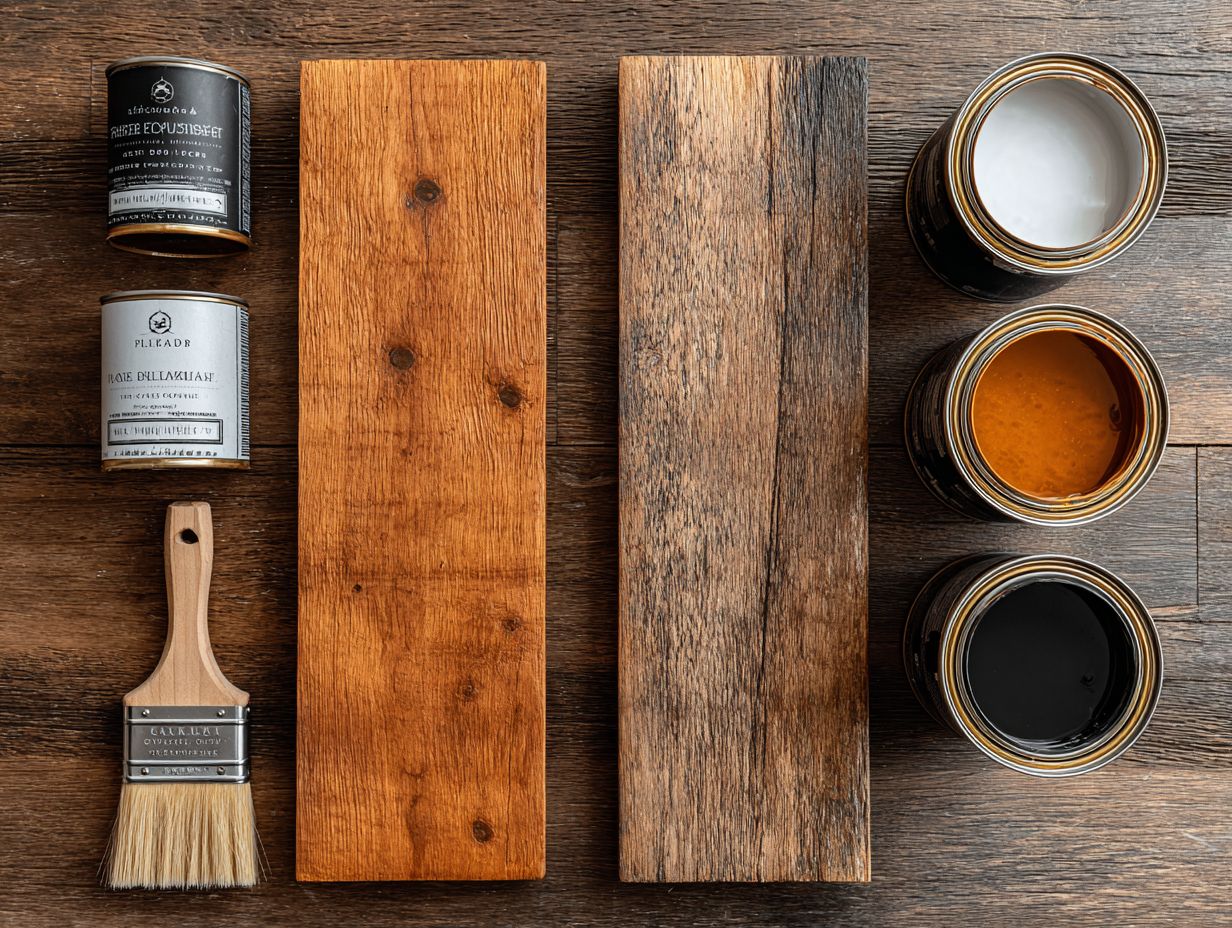
Key factors to consider when choosing a polyurethane finish include the type of wood species, expected foot traffic, and maintenance requirements.
Consider wear resistance and application ease. For example, oil-based polyurethane is very strong and works well in busy places, so it’s perfect for hardwood floors.
Water-based options, while less resilient, are easier to apply and dry quickly, minimizing downtime. If odor is a concern, water-based finishes are preferable due to their lower VOC levels.
Look at the surface style; matte finishes offer a soft and natural appearance, while gloss finishes make colors more vivid, resulting in a noticeable effect.
Recommended Applications
For high foot traffic areas, oil-based polyurethane is often recommended, while water-based products are suitable for homes with pets due to their lower odor and faster drying times.
When selecting a finish, consider the specific needs of your space. For instance, if you’re refinishing a commercial venue, oil-based polyurethane can withstand heavy wear and tear, providing durability and a rich finish. Use products like Minwax Super Fast-Drying Polyurethane.
Conversely, for a home with pets, water-based options like Bona Traffic provide a durable finish without hazardous fumes. They dry quicker, allowing pets to return to the area soon after application.
Evaluate your environment’s foot traffic and sensitivity to odor to choose the ideal product.
Final Thoughts
Finding the right polyurethane finish for your hardwood floors involves considering strength, appearance, and how it affects the environment.
To make an informed decision, consider the three main types of polyurethane finishes: water-based, oil-based, and moisture-cure.
- Water-based finishes, such as Bona Traffic (about $100 per gallon), dry fast and release fewer harmful chemicals, which makes them great for indoor use.
- Oil-based options, such as Minwax Polyurethane (approximately $50/gallon), provide a rich amber hue and greater durability, though they take longer to dry.
- Moisture-cure finishes, while less common, offer excellent resilience but can be tricky to apply.
Evaluate your specific needs regarding drying time, finish feel, and environmental considerations to find the perfect match.
Frequently Asked Questions
What is the difference between water-based and oil-based polyurethane finishes?
Water-based polyurethane finishes are made with water as the main solvent, while oil-based polyurethane finishes use mineral spirits or other petroleum-based solvents.
Which type of polyurethane finish is more environmentally friendly?
Water-based polyurethane finishes are generally considered more environmentally friendly because they contain lower levels of volatile organic compounds (VOCs) and have less odor.
Do water-based and oil-based polyurethane finishes have different levels of durability?
In general, oil-based polyurethane finishes are known for being more durable and resistant to wear and tear. However, improvements in technology have made water-based finishes more durable, and in some cases, they can be more effective than oil-based finishes for specific uses.
Can I use water-based and oil-based polyurethane finishes interchangeably?
It is not recommended to mix or layer water-based and oil-based polyurethane finishes as they have different chemical compositions and may not adhere to each other properly. It is best to use the same type of finish for a consistent and successful application.
Which type of polyurethane finish is easier to clean up?
Water-based polyurethane finishes are easier to clean up as they can be thinned and cleaned with water. Oil-based finishes require the use of mineral spirits or other petroleum-based solvents for cleaning.
Are there any special considerations when using water-based or oil-based polyurethane finishes on specific types of wood?
Yes, some types of wood may react differently to water-based or oil-based polyurethane finishes. For example, oil-based finishes may yellow over time on light-colored woods such as maple, while water-based finishes may cause certain types of wood to raise its grain. It is always best to test the finish on a small inconspicuous area before applying it to the entire surface.
